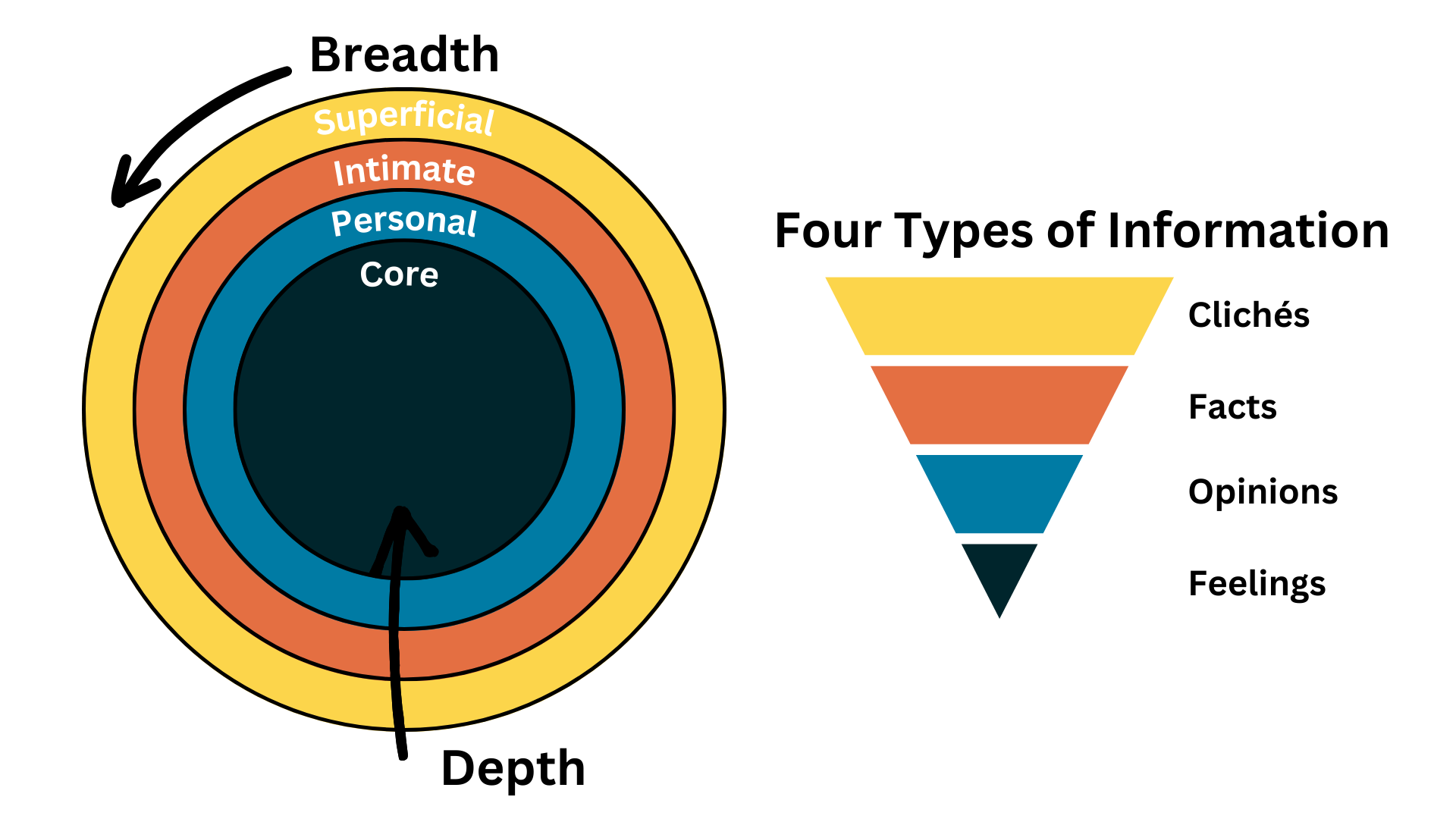A few weeks ago, we discussed the role that social media plays in government communications today. In that blog post we learned about the Continuum of Emotional Connection and how our social media followers are merely on the first step of a journey to ultimately become community members.
Today, I would like to explore the social psychology theory referred to as the Social Penetration Theory (SPT). In addition, we’ll explore how government organizations can use the SPT to foster connection with their audiences on social media and move them along the Continuum of Emotional Connection.
What is the Social Penetration Theory (SPT)?
I was first introduced to the SPT while reading Brooke Sellas’ book, “Conversations That Connect.” And immediately I was blown away by the theory’s simplicity and depth.
The SPT was developed by two social psychologists, Irwin Altman and Dalmas Taylor, back in the 1970s as a way to explain how relationships are formed through varying degrees of self-disclosure.
Let’s take a look at those varying degrees, or levels, of self-disclosure now.

As you can see the SPT is also often referred to as the “onion theory.” (If you’re not a big fan of onions perhaps the jawbreaker theory?)
Altman and Taylor’s theory states that we form relationships by disclosing information about ourselves to one another. These disclosures lead to us trusting each other and forming deeper relationships over time. As we pass through the different layers of disclosure, (Superficial, Intimate, Personal, and Core) each layer is more revealing than the one before. The four types of information that we share according to the SPT are clichés, facts, opinions, and feelings.
Examples of clichés, facts, opinions, and feelings
Clichés. These types of posts are exactly what you might imagine them to be, safe. This is the type of content that is known as “corporate content.” You know, the one that was okayed by your boss, their boss, HR, etc.
It is okay to post clichés occasionally, but if you post them too often you are missing out on connecting with your audience.
Here is an example of cliché content from The State of Michigan (Michigan.gov):
Facts. Factual posts, while they do disclose a touch more information than clichés, there still isn’t much sharing going on. There is information being shared, but no emotion.
Here is an example of a factual post from the Southern Nevada Water Authority:
Opinions. At this stage, you will begin to reveal your organization’s beliefs. Vulnerability comes into play at this stage as you begin to share ideas and opinions that might not align with your entire audience. The opinions you choose to share don’t have to be radical or extremist.
Check out this great example by The National Park Service asking their audience what their favorite park palette is:
Feelings. Once you’ve reached the feelings layer of the onion (jawbreaker) both you (the organization) and your audience are sharing their feelings. A whole new level of vulnerability is achieved and with it, a whole new level of trust.
Your content might not resonate with everyone, but it definitely should resonate with your audience.
It doesn’t matter what platform you’re on or what your organization does. Every organization can achieve this level of connection with its audience on social media.
Here is a fantastic example from the Colorado Parks and Wildlife:
Organizations self-disclose information online through content
Let’s do a little exercise.
Head to your organization’s social media profiles and look at last month’s posts.
How many of your social media posts could be categorized as clichés? Facts? Opinions? How about feelings?
If I were a betting man, I would wage that the majority of your posts could be categorized into either clichés or facts.
You’re not alone.
In fact, the vast majority of government organizations share clichés 50+ percent of the time!
We’re missing out on the opportunity to connect deeper with our audiences, to forge stronger relationships with those we serve, and create a true community.
You see, people don’t follow our organizations on social media because they “like” us, it’s because they want to get to know us.
As we build relationships through vulnerability, establishing trust, and sharing our opinions and feelings we move our “social media followers” along the Continuum of Emotional Connection because we are creating content that resonates with them.
A challenge
I hope that you enjoyed learning about the SPT as much as I did. I truly believe that we, as government communicators, can benefit immensely from the use of SPT in our content creation.
After learning about the SPT, I leave you with this challenge: Make the extra effort to craft more quality content that uses opinions and feelings.
Compare how these new posts perform against your normal content of clichés and facts, and let me know if you notice any difference in engagement, sentiment, and connection on your organization’s social media pages.
ZACK’S FACTS
Subscribe to “The Zack’s Facts” newsletter for my monthly take on the latest industry topics, a government account spotlight, and resources for you to become a better government communitcator.
